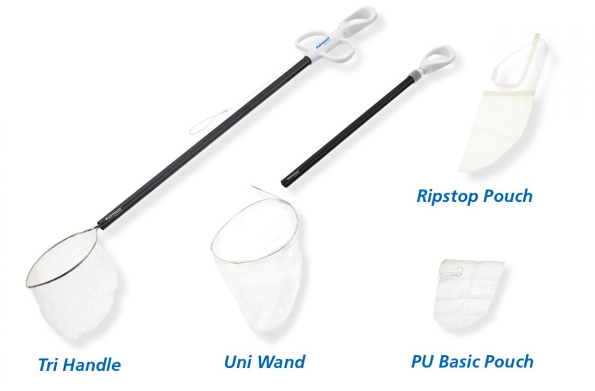Introduction: The Role of Trocar and Specimen Retrieval Bags in Surgery
Minimally invasive surgery (MIS) has revolutionized the medical field, offering patients faster recovery times and less trauma to the body. Among the essential instruments used in MIS are the trocar and specimen retrieval bags, often referred to as Endobags. These tools are integral to procedures that require the removal of tissue or other specimens from the body through small incisions.
When a specimen retrieval bag (Endobag) is used during surgery, it is crucial to choose the right size of trocar to ensure efficiency and safety. This article explores the relationship between trocar size and specimen retrieval, providing a thorough understanding of the factors that need to be considered when selecting the appropriate trocar size for endobag specimen retrieval.

Understanding Trocar and Endobag Specimen Retrieval
A trocar is a surgical instrument that creates an opening in the body to facilitate the insertion of other surgical instruments, including a camera, tools for dissection, and specimen retrieval bags. The trocar is equipped with a sharp, pointed tip, which allows it to puncture the body with minimal force.
On the other hand, the endobag specimen retrieval bag is designed to safely collect and remove tissue, organs, or foreign bodies from the body during minimally invasive procedures. It helps to contain and prevent contamination of the surgical site while ensuring that the specimen is extracted without causing injury.
The key to successfully using an endobag specimen retrieval is ensuring that the size of the trocar matches the required size for the specimen retrieval bag, minimizing complications during surgery.
Factors to Consider When Choosing Trocar Size for Endobag Specimen Retrieval
1. Size of the Specimen
The first consideration when selecting a trocar size is the size of the specimen that needs to be retrieved. If the specimen is relatively small, a smaller trocar can be used, which will result in a smaller incision. Larger specimens, on the other hand, require a larger trocar to accommodate the retrieval bag and specimen comfortably. Specimen size should be evaluated by the surgeon before the procedure begins.
2. Type of Surgery
The type of surgery being performed also plays a crucial role in determining the appropriate trocar size. For example, in laparoscopic procedures involving tissue or organ removal, larger specimen retrieval bags may be needed, requiring a larger trocar. Procedures such as gallbladder or colon resections may need a trocar that provides enough space to remove the organ safely.
3. Type of Specimen Retrieval Bag (Endobag)
Endobag specimen retrieval bags come in various sizes and designs, including standard, expanded, and double-layer options. Some endobags are designed to be introduced through smaller trocars (5mm to 10mm), while others, especially those used for larger specimens, may require a trocar of 12mm or more. The diameter and length of the retrieval bag are key factors when considering trocar size.
4. Surgeon’s Preference and Experience
Surgeon experience and comfort with different sizes of trocars also play an important role in trocar selection. Experienced surgeons may prefer to use a slightly smaller trocar for precise specimen retrieval, whereas others may opt for larger trocars to avoid complications.
Trocar Sizes and Their Corresponding Endobag Specimen Retrieval Bags
Different sizes of trocars correspond to different sizes of endobag specimen retrieval bags, and it is essential to match the trocar with the right bag to avoid complications:
5mm Trocar
A 5mm trocar is typically used for small procedures and works well for retrieving small specimens, such as biopsy samples. These smaller trocars can accommodate small endobag specimen retrieval bags that are ideal for procedures like diagnostic laparoscopy.
10mm Trocar
A 10mm trocar is commonly used in most standard laparoscopic surgeries, including cholecystectomy and appendectomy. Endobag specimen retrieval bags designed for this size can handle moderately sized specimens such as gallbladders and appendices. This size of trocar ensures that there is enough space for both the instrument and the specimen retrieval bag to fit comfortably.
12mm or Larger Trocar
In surgeries involving larger specimens, such as full organ removal or tumor resection, a 12mm or larger trocar is required. These larger trocars can accommodate larger endobag specimen retrieval bags and ensure that the specimen is safely extracted without damaging surrounding tissue.
The Importance of Proper Trocar Selection in Minimally Invasive Surgery
The success of a minimally invasive procedure largely depends on the correct use of surgical instruments, particularly the trocar and endobag specimen retrieval bag. If the trocar is too small, the specimen may not fit within the retrieval bag, leading to potential complications such as tissue tearing. On the other hand, if the trocar is too large, it may cause unnecessary damage to surrounding tissues and increase recovery time.
Proper trocar selection is critical for ensuring a smooth, efficient procedure. Surgeons should always choose the smallest trocar size that accommodates the specimen retrieval bag without causing complications.
Conclusion: Choosing the Right Trocar Size for Endobag Specimen Retrieval
In summary, choosing the right size trocar when using an endobag specimen retrieval bag is a fundamental aspect of performing a successful minimally invasive procedure. Key factors such as specimen size, type of surgery, and surgeon experience all play a role in determining the appropriate trocar size.
At Kangji Medical, we understand the importance of selecting the right surgical tools for every procedure. Our products, including endobag specimen retrieval solutions, are designed to meet the highest standards of precision and safety, ensuring optimal outcomes for both surgeons and patients. By matching the right trocar size with the appropriate endobag specimen retrieval bag, healthcare professionals can perform procedures with confidence, ensuring the highest levels of care and safety.




Comments